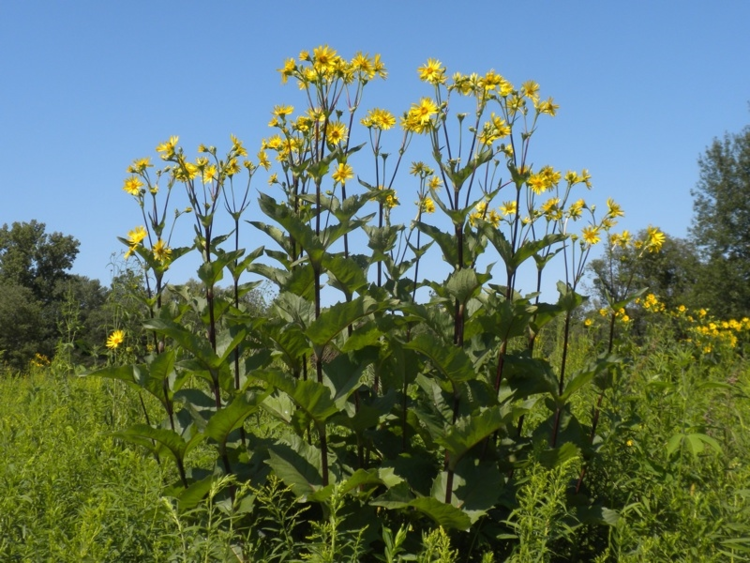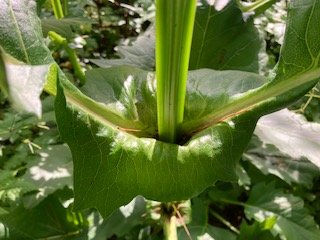Cup Plant
A few years ago I noticed an extremely fast growing and unique looking plant growing in my backyard. After some investigation, I discovered that it was a cup plant (Silphium perfoliatum). This native perennial gets tall, real tall. Plant ID books and descriptions will suggest a height of 3-8 feet but the plants in my yard have gotten as tall as 10 feet! Amazing!!
Like most of the other flowers in the Aster family, the cup plant is highly attractive to pollinators. Butterflies, native bees, and honey bees are especially attracted to its bright yellow flower heads that resemble sunflowers. In the fall, it produces abundant seeds that songbirds, such as goldfinch, will readily eat.
Besides the impressive height and stately appearance, the cup plant has another interesting feature that is revealed by its common name. The leaves of this plant clasp the stem, forming a cup around the stem. This cup catches rain water and provides water for small birds, butterflies and insects. The large leaves of this plant also provide small birds with cover from predators and shade during hot summer days. With food, water, shelter and shade, this plant seems like a perfect place to call home.
The cup plant provides a wide variety of benefits to many different types of animals, not just birds and insects. In addition to its nectar, seeds, and “cups” of water, its stems can be chopped up, tied into bundles, and used to make mason bee homes after the plant dies back in the winter (see video below to learn more on mason bees and how to provide the right environment for them). Those who have space and want to grow a unique, native plant that benefits pollinators and other wildlife should definitely consider cup plant.


